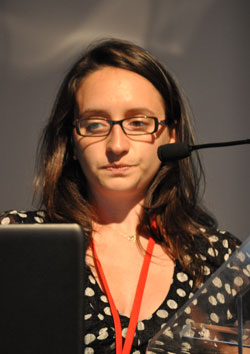Sterility test for ophtalmic preparations on R2A solid state medium
2 October 2011
M. Saliège1, E. Thibert1, F. Chapelle2, V. Sautou1, O. Traoré2, J. Chopineau1 1 Service Pharmacie, CHU Clermont-Ferrand2 Laboratoire Hygiène Hospitalière, CHU Clermont-Ferrand

The European Pharmacopoeia sterility test (Eur. Ph. 7th ed, ch. 2.6.1) requires 2 liquid culture media (trypticase soy agar (TS) and Sabouraud (SG2)) and long incubation times (14 days). The solid medium R2A is a medium suited to stressed germs. We wanted to know whether R2A, as recommended for dialysis water, was suited to checking ophthalmic preparations. This work’s objective was thus to validate the R2A medium in comparison with the media recommended by Ph. Eur.
The strains used were those of Ph. Eur. Seven anti-infectious preparations and an immunosuppressant were tested comparing TS and SG2 media versus R2A. Membrane filtration (cellulose nitrate, 0.45µm) works as an open system under vertical laminar flow hood. The fertility of R2A and the filtration method were studied. The choice of rinsing solution (water, NaCl or Letheen) and its volume (500 or 100 ml) were determined by studying the active principle and the galenic form of the preparation. The result were read at 3 days (D3) after incubation at 37°C, 30°C or 25°C according to the types of germs but also of the growth medium. The tests were conducted in triplicate and in parallel on control batches.
R2A revealed all germs at J3. It was equivalent to the other media. (For bacteria: Relative Deviation (RD) < 20% and Coefficient of Variation (CV) < 12%. For fungi: ER< 9% and CV< 8.7%). The membrane filtration method was validated and is reproducible. RDs were similar from one test to another and for each germ (S. aureus: RD1 = 6.,62% RD2= 7.33% and RD3= 6.8%). The antimicrobial activity of the preparations was inhibited by rinsing, while only Amphotericin B retained its antifungal properties both in the liquid medium and on R2A.
This process is used routinely. The time required to obtain results (D3) as compared with the Ph. Eur. method allows batches to be released sooner for preparations with a short expiry date.